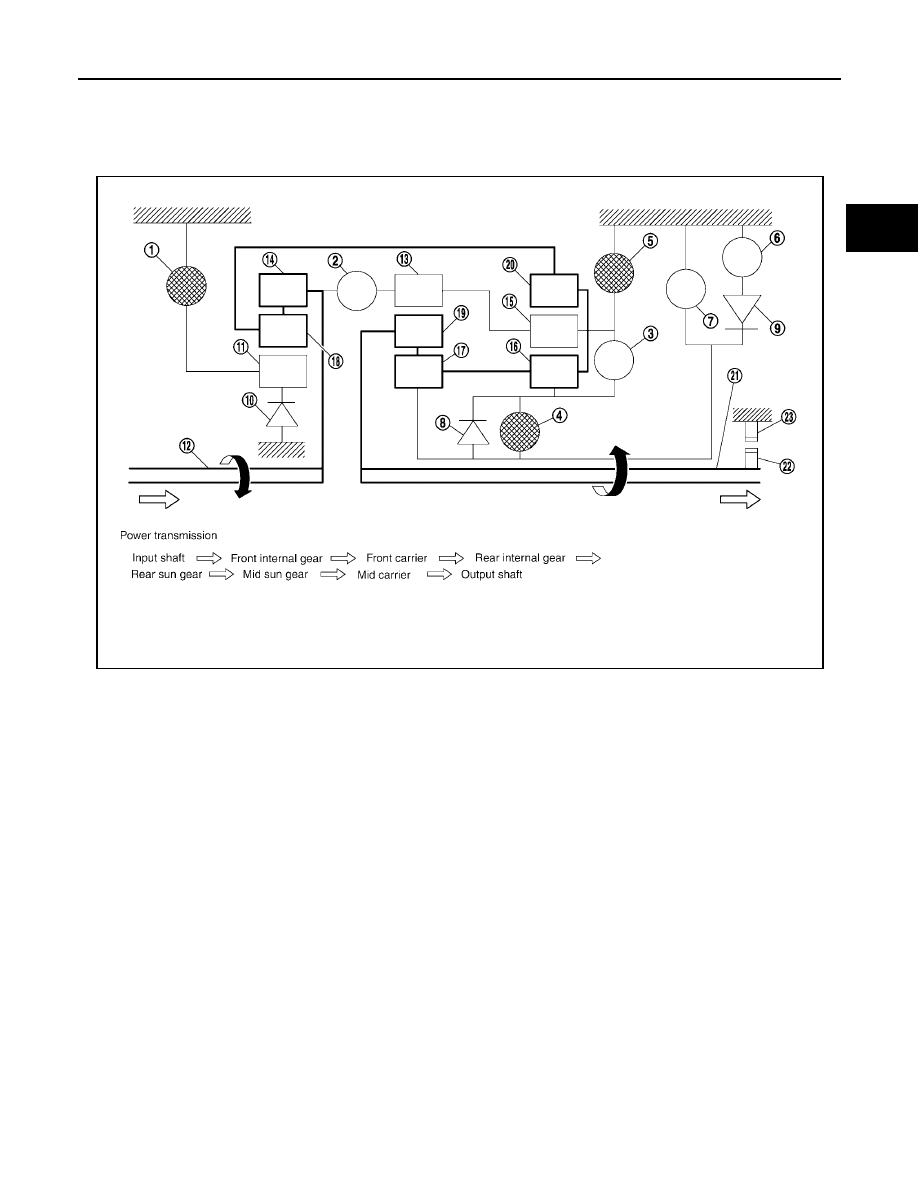Nissan Pathfinder (2006 year). Manual - part 5

A/T CONTROL SYSTEM
AT-31
D
E
F
G
H
I
J
K
L
M
A
B
AT
2006 Pathfinder
“R” Position
●
The front brake fastens the front sun gear.
●
The high and low reverse clutch is coupled, and the mid sun gear and rear sun gear are connected.
●
The reverse brake fastens the rear carrier.
1.
Front brake
2.
Input clutch
3.
Direct clutch
4.
High and low reverse clutch
5.
Reverse brake
6.
Forward brake
7.
Low coast brake
8.
1st one-way clutch
9.
Forward one-way clutch
10. 3rd one-way clutch
11.
Front sun gear
12. Input shaft
13. Mid internal gear
14. Front internal gear
15. Rear carrier
16. Rear sun gear
17. Mid sun gear
18. Front carrier
19. Mid carrier
20. Rear internal gear
21. Output shaft
22. Parking gear
23. Parking pawl
SCIA1519E